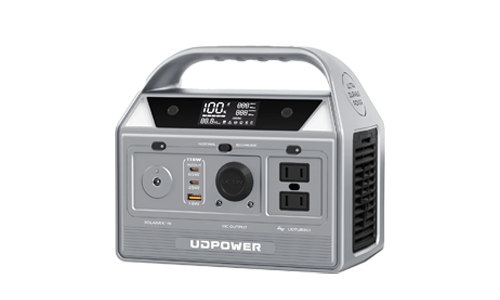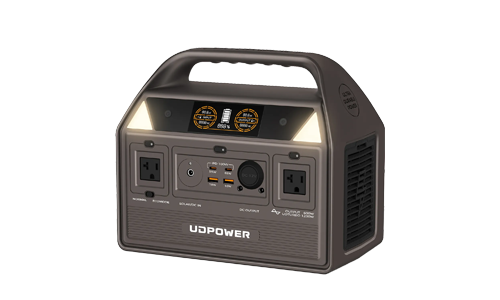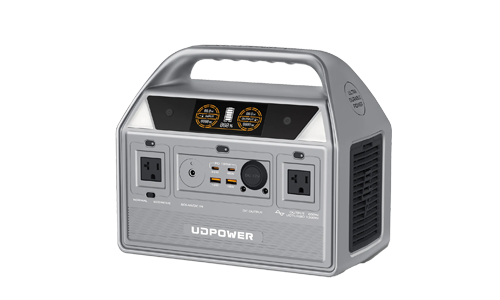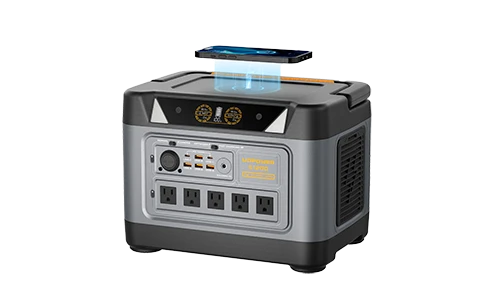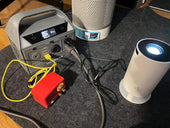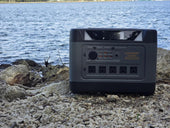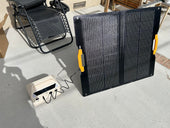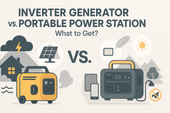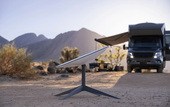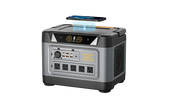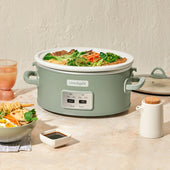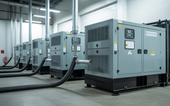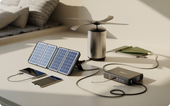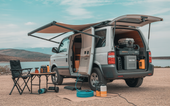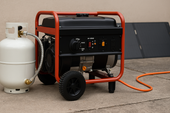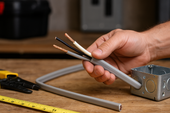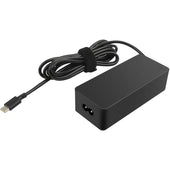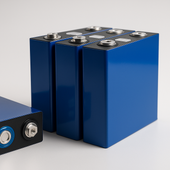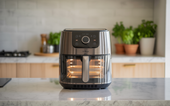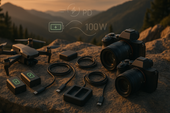How Does a Power Station Work? (Portable Edition)
ZacharyWilliamUnderstand batteries, inverters, BMS, charging paths, and how to estimate runtime—plus vetted UDPOWER picks with verified specs.
1) What is a portable power station?
A portable power station is a rechargeable battery box that provides household-style AC outlets alongside DC outputs (USB-C/USB-A, 12 V car, DC barrel) so you can run appliances and charge devices off-grid. Unlike gas generators, it’s silent and emissions-free, making it ideal for camping, road trips, field work, and outage backup.
2) What’s inside: the core building blocks

Battery pack (LiFePO4)
The energy reservoir, usually lithium iron phosphate for long cycle life and stability. Capacity is rated in watt-hours (Wh)—how much work the pack can do in total.
Battery management system (BMS)
Monitors voltage, current, temperature, and cell balance to prevent over-charge, over-discharge, short circuit, and thermal issues.
DC-DC regulation
Steps battery voltage up/down to deliver clean, stable power to USB / 12 V ports and to accept solar/car charging efficiently (MPPT or high-efficiency buck/boost).
Inverter (pure sine wave)
Converts the battery’s DC into 120 V AC so you can plug in household devices. Two ratings matter: continuous (W) and surge/peak (W) for startup spikes.
3) How the power flows (AC, DC, USB, wireless)
When you connect a load, the station’s control board routes power through a high-efficiency path:
- USB-C PD / USB-A: direct DC regulation; minimal conversion loss, best for phones, tablets, laptops.
- 12 V car / DC5521: regulated DC for fridges, routers, LED lighting.
- AC outlets: DC→AC via inverter; slightly less efficient than DC ports but required for most appliances.
4) How charging works (wall, car, solar, UPS)
- Wall (AC): The station’s charger converts AC→DC and refills the pack. Some models offer fast charging (sub-2 hours) with optimized thermal control.
- Car (12 V): Trickle-to-moderate charging while driving; great for road trips.
- Solar: Panels feed DC through an MPPT/buck stage; total input depends on the station’s max solar wattage and voltage window.
- UPS/bypass: Certain models can act as an uninterruptible power supply, switching to battery in <10 ms to keep PCs/CPAP/routers alive during outages. :contentReference[oaicite:0]{index=0}
5) Runtime math you can trust
Real-world runtime depends on capacity, conversion efficiency, and device draw.
-
DC/USB loads:
Hours ≈ (Wh × 0.9) ÷ Device W -
AC loads:
Hours ≈ (Wh × 0.85) ÷ Device W(extra inverter losses) -
CPAP @ 40 W on a 596 Wh unit: ~
(596×0.85)/40 ≈ 12.6 h(humidifier off).
6) Safety, durability & battery life
- LiFePO4 cycle life: Many modern stations deliver 3,000–4,000+ cycles to 80% capacity. UDPOWER specifies LiFePO4 across its lineup with 4,000+ cycles.
- Thermal & short-circuit protection: Managed by the BMS and control firmware.
- Pass-through/UPS: On supported models, you can power devices while charging and keep them online through brief outages (<10 ms switchover on S1200).
7) Picking the right size
| Use case | What to look for | Why it matters |
|---|---|---|
| Phones, cameras, drones, laptop | 200–400 W inverter, 200–300 Wh, dual USB-C | Lightweight, fast recharge, great energy per pound |
| Weekend camping, CPAP, mini-fridge | 600 W inverter, ~600 Wh, 2× AC + 12 V | Enough headroom for fridges/medical devices |
| Home/RV backup, small kitchen tools | 1000–1200 W inverter (higher surge), >1 kWh, UPS | Handles coffee makers/toasters and keeps routers/PCs online |
8) Recommended UDPOWER models (specs verified)
UDPOWER C400 — Compact everyday power

- Capacity: 256 Wh LiFePO4 (4,000+ cycles) • Inverter: 400 W continuous / 800 W surge
- I/O highlights: 2× AC (120 V), 2× USB-C (up to 100 W total), USB-A, 12 V car, 2× DC5521, plus EC5 jump-starter port
- Fast charge: ~0–80% ≈ 1.5 h (adapter + USB-C dual-input); weight ≈ 6.88 lb
Specs drawn from the official product page and UDPOWER’s technical write-ups.
UDPOWER C600 — The weekend “sweet-spot”

- Capacity: 596 Wh LiFePO4 • Inverter: 600 W continuous / 1,200 W surge
- I/O highlights: 2× AC, USB-C PD 65 W + 35 W, 2× USB-A 18 W, 12 V car outlet
- Use cases: CPAP, mini-fridge, multiple devices during outages; ~12.3 lb
Specs from UDPOWER’s C600 product page and collection listings.
UDPOWER S1200 — Home/RV backup + UPS

- Capacity: ~1,190 Wh LiFePO4 • Inverter: 1,200 W continuous / 1,800 W surge
- UPS mode: <10 ms switchover; great for PCs/routers/CPAP
- Ports (15 total): 5× AC, 2× USB-C 100 W, multiple USB-A, DC outputs, wireless charging
- Charging: Fast AC; solar up to ~400 W; AC up to ~800 W per collection sheet
Specs verified from the S1200 product page and collection overview (charging & port set).
Choose the smallest model that covers your peak AC wattage with 20–30% headroom and enough Wh for your longest session. For many campers, C600 hits the balance; for outage-ready homes or RVs, S1200’s UPS and higher surge are worth it.
9) Quick answers (FAQ)
Can I run a CPAP overnight?
Yes—match wattage to capacity. A ~600 Wh unit like C600 can often cover a night, especially with humidifier off.
Can I use third-party solar panels?
UDPOWER accepts DC7909 input; compatible panels in the right voltage range can work (adapters may be needed).
Is pass-through/UPS safe?
On supported models like S1200, UPS switching is <10 ms and designed for sensitive gear.


